Start Capacitor
A start capacitor is a type of capacitor used in single-phase AC induction motors to help them start. It provides a surge of current to create a phase shift in the motor’s winding, which helps establish a rotating magnetic field. This field is necessary for the motor to begin spinning.
Get Start Capacitors to Delight Your Customers
Elevate your product offerings and customer satisfaction with our high-quality start capacitors. Designed to enhance the performance and longevity of single-phase AC induction motors, our start capacitors are the perfect solution for a wide range of applications.
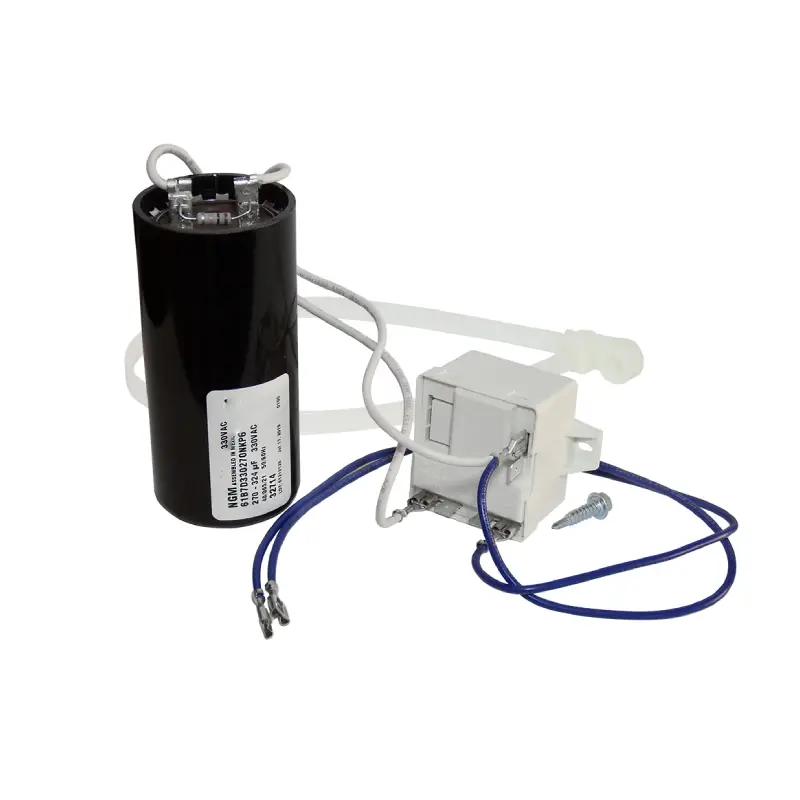
hard start capacitor
A hard start capacitor is a specialized type of capacitor designed to provide a significant surge of current to help motors, especially large motors, overcome high starting loads. It’s particularly useful in applications where motors frequently experience heavy starting loads, such as compressors, pumps, and HVAC systems.
How Does a Hard Start Capacitor Work?
- Initial Power-On: When the motor is first turned on, the hard start capacitor is connected in parallel with the motor winding.
- Current Surge: The capacitor supplies a significant surge of current to the motor, boosting its starting torque.
- Reduced Starting Current: This surge of current helps the motor accelerate quickly, reducing the inrush current and minimizing stress on the motor and power supply.
- Disconnection: Once the motor reaches a certain speed, a centrifugal switch disconnects the hard start capacitor from the circuit.
Dual Start Capacitor
A dual run capacitor is a type of capacitor that combines the functions of a start capacitor and a run capacitor into a single unit. This innovative design simplifies installation and maintenance, making it a popular choice for many applications.
Benefits of Using a Dual Run Capacitor:
- Simplified Installation: A single component replaces two, reducing installation time and complexity.
- Improved Performance: Optimizes motor performance by providing both starting and running capabilities.
- Enhanced Efficiency: Reduces energy consumption and improves overall system efficiency.
- Longer Motor Life: Minimizes stress on the motor, extending its lifespan.
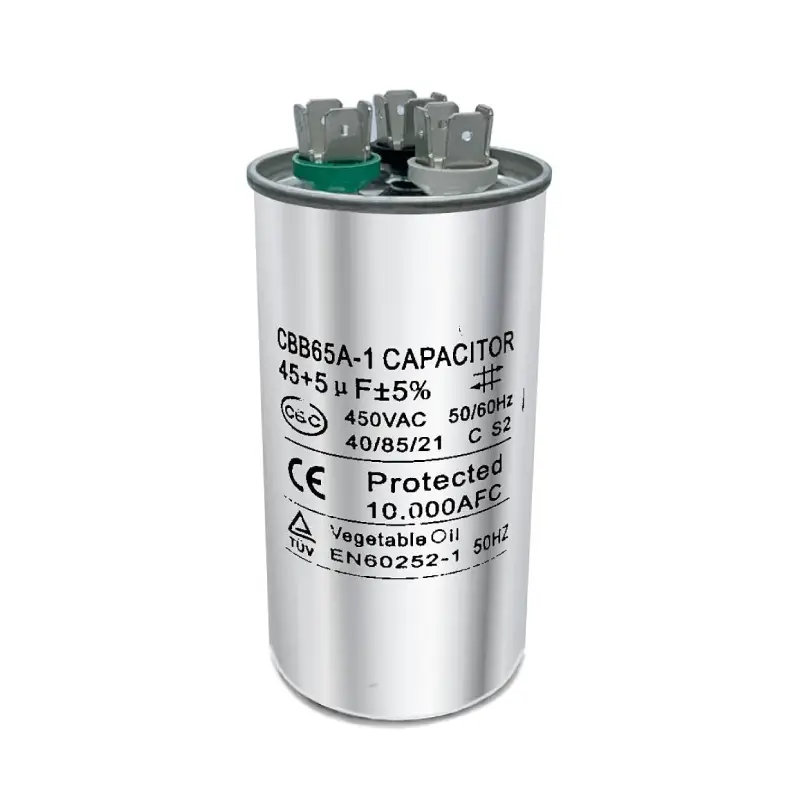
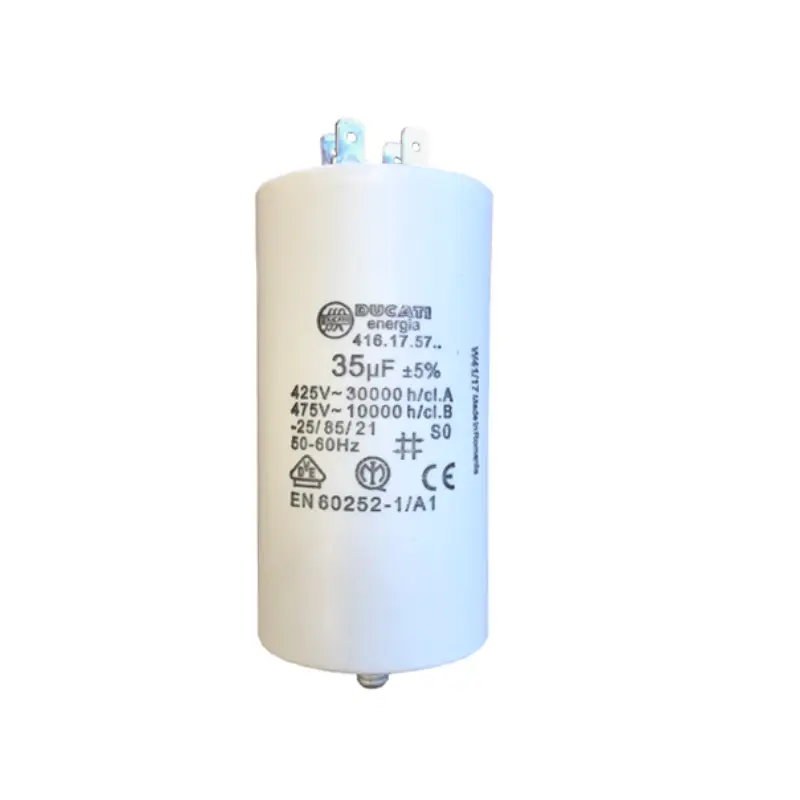
well pump start capacitor
We specialize in manufacturing high-quality, durable start capacitors specifically designed for well pumps. Our capacitors are engineered to provide reliable starting power, ensuring smooth operation and extending the life of your well pump system.
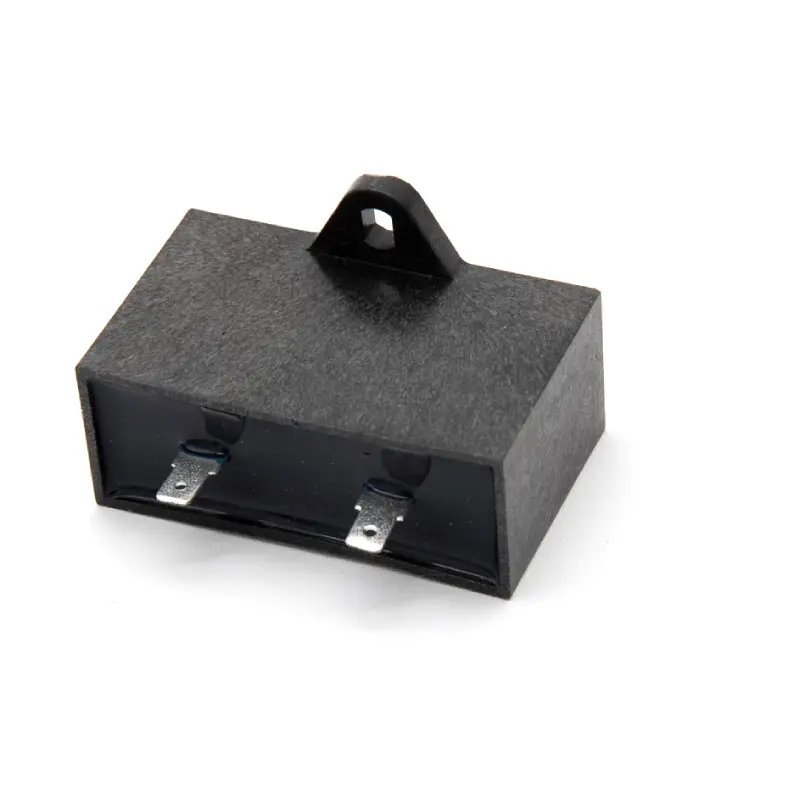
refrigerator start capacitorx
We specialize in manufacturing high-quality, reliable refrigerator start capacitors. Our capacitors are designed to provide the necessary surge of power to efficiently start your refrigerator’s compressor motor. With precise capacitance and voltage ratings, our capacitors ensure smooth and efficient operation of your refrigerator.
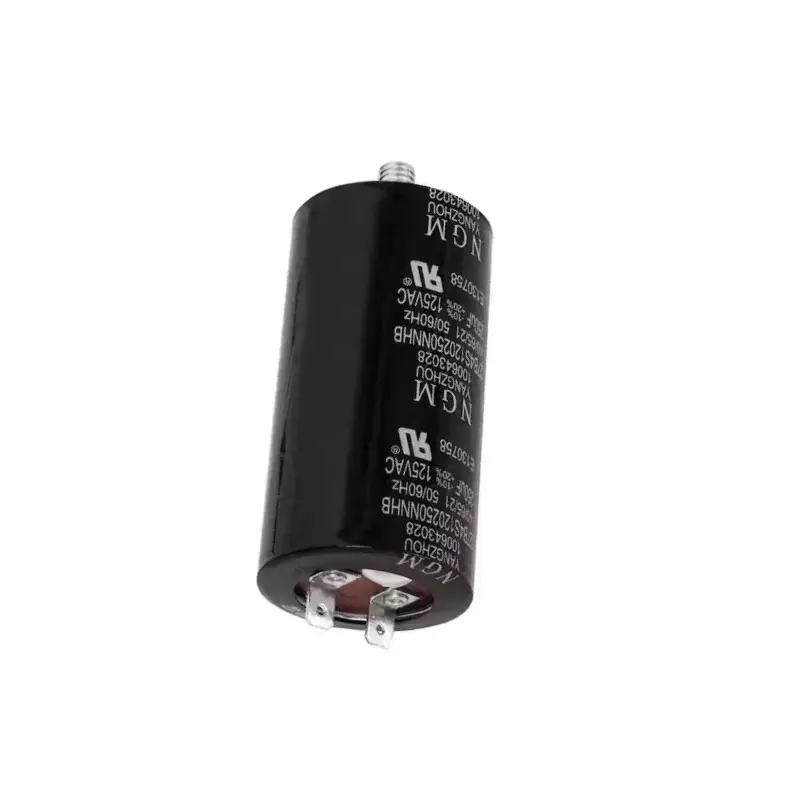
compressor start capacitor
We specialize in manufacturing high-quality compressor start capacitors designed to enhance the performance and reliability of your refrigeration and air conditioning systems. Our capacitors offer superior starting torque, reduced inrush current, and extended motor life.
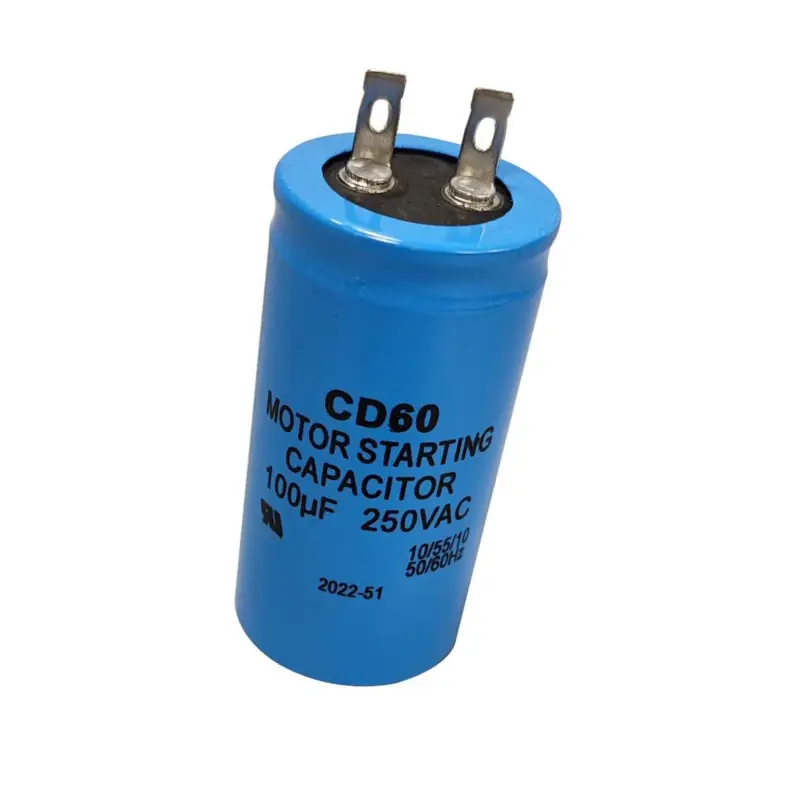
100 mFDstart capacitor
We specialize in manufacturing top-rated 100 MFD start capacitors designed to provide reliable and efficient motor starting. Our capacitors are built to withstand demanding conditions and offer superior performance, durability, and long service life, making them ideal for various industrial and commercial applications.
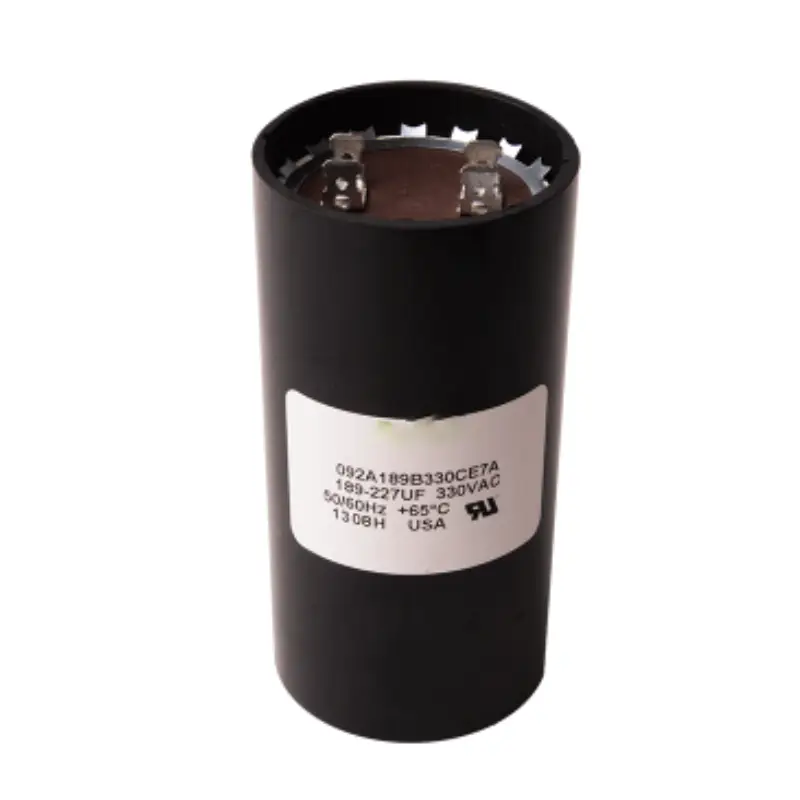
330v start capacitor
We specialize in manufacturing high-quality, 330V start capacitors designed to deliver reliable and efficient motor starting performance. Our capacitors are built to withstand demanding applications, ensuring smooth and trouble-free operation of your equipment.
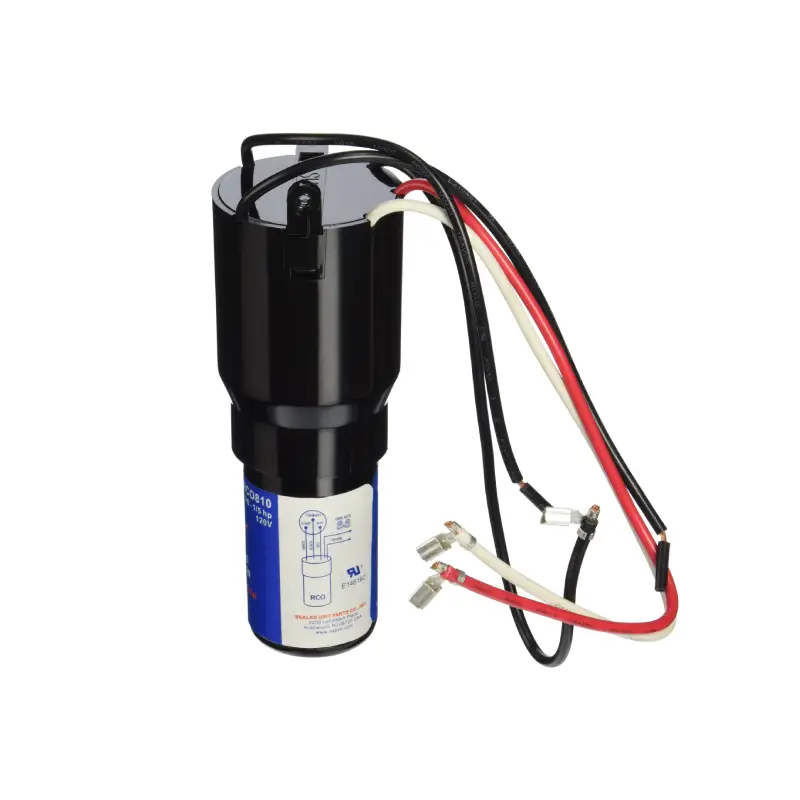
3 n 1 start capacitor
We specialize in manufacturing high-quality 3 in 1 start capacitors, combining the functions of a start capacitor, run capacitor, and PFC capacitor into a single unit. Our capacitors offer superior performance, reliability, and energy efficiency, making them ideal for various industrial and commercial applications.
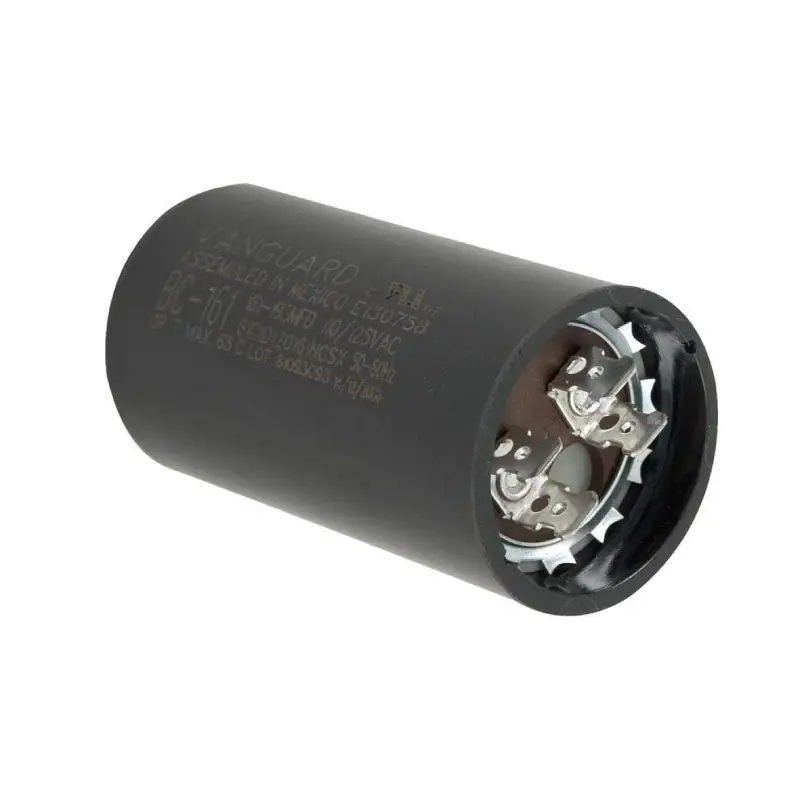
oversized start capacitor
We specialize in manufacturing oversized start capacitors designed for heavy-duty applications. Our capacitors deliver superior starting torque and reliable performance, making them ideal for motors with high starting loads. Experience the power of our oversized capacitors.
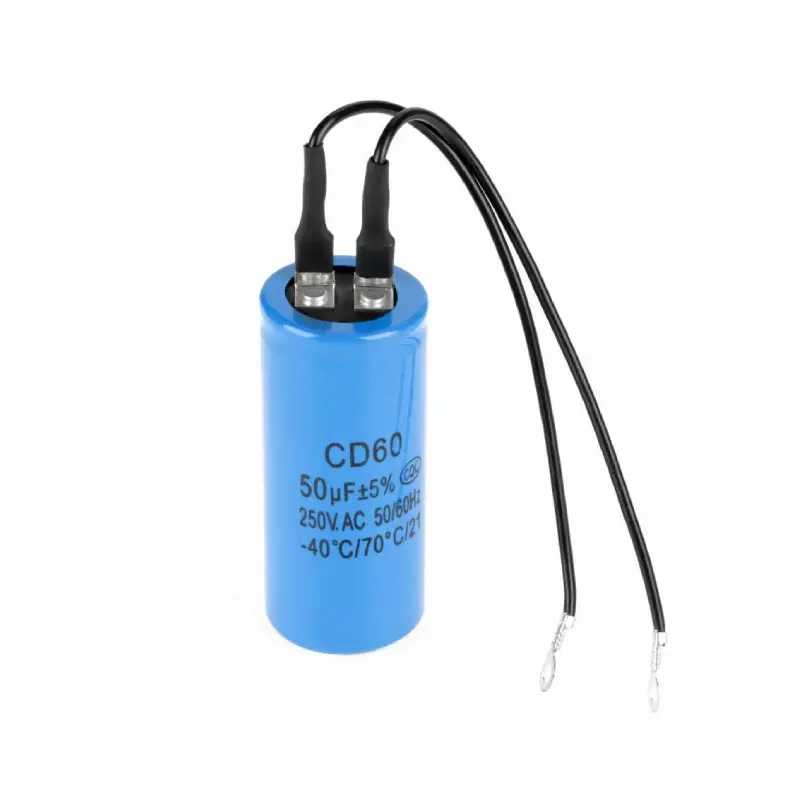
Slow start capacitor
We specialize in manufacturing high-quality, slow-start capacitors designed to control the startup current of motors. Our capacitors offer reliable performance, durability, and precise control of motor acceleration, protecting sensitive equipment and reducing power surges.
Start Capacitor FAQs
what is a start capacitor?
A start capacitor is a type of capacitor used in single-phase AC induction motors to help them start. It provides a surge of current to create a phase shift in the motor’s winding, which helps establish a rotating magnetic field. This field is necessary for the motor to begin spinning.
what does a start capacitor do?
A start capacitor provides a surge of current to help a single-phase AC induction motor start. It creates a phase shift in the motor’s winding, which establishes a rotating magnetic field. This field is crucial for the motor to begin spinning.
what are difference between start and run capacitor?
Start vs Run Capacitors: A Quick Comparison
Start and run capacitors are essential components in single-phase AC induction motors. While they work together to ensure efficient motor operation, they have distinct roles.
| Feature | Start Capacitor | Run Capacitor |
|---|---|---|
| Purpose | Provides a surge of current to initiate motor rotation | Improves motor efficiency and power factor |
| Capacitance | Higher capacitance (typically 70-120 µF) | Lower capacitance (typically 3-70 µF) |
| Connection | Connected in series with the start winding | Connected in parallel with the run winding |
| Usage | Momentary use, disconnected after the motor starts | Continuous use, remains connected while the motor is running |
In essence, the start capacitor gives the motor an initial boost to get it spinning, while the run capacitor helps the motor run smoothly and efficiently once it’s started.
how does a starting capacitor work?
A start capacitor works by creating a phase shift in the current flowing through the motor’s windings. This phase shift is crucial for establishing a rotating magnetic field within the motor.
Here’s a breakdown of how it works:
- Initial Power-On: When the motor is first turned on, the start capacitor is connected in series with the start winding.
- Phase Shift: The capacitor stores electrical energy and releases it slowly, causing a phase shift between the current in the start winding and the main winding.
- Magnetic Field: This phase shift results in a rotating magnetic field, which induces a voltage in the rotor windings.
- Motor Starts: The induced voltage in the rotor windings causes the motor to start rotating.
- Centrifugal Switch: Once the motor reaches a certain speed, a centrifugal switch disconnects the start capacitor from the circuit.
By providing this initial phase shift, the start capacitor helps the motor overcome the initial inertia and begin rotating. Once the motor is up to speed, the start capacitor is no longer needed and is disconnected.
how to wire a start capacitor?
Wiring a Start Capacitor: A Step-by-Step Guide
Safety First:
- Power Off: Always ensure the power is turned off before working on any electrical component.
- Discharge the Capacitor: Use an insulated screwdriver to short the capacitor’s terminals and discharge any stored energy.
Tools and Materials:
- Wire strippers
- Wire nuts
- Screwdriver
- Insulated screwdriver
- New start capacitor
Steps:
Identify the Motor Terminals:
- Common Terminal (C): This is the main power terminal.
- Start Winding Terminal (S): This connects to the start winding.
- Run Winding Terminal (R): This connects to the run winding.
Connect the Capacitor:
- Positive Terminal: Connect the positive terminal of the capacitor to the “C” terminal of the motor.
- Negative Terminal: Connect the negative terminal of the capacitor to the “S” terminal of the motor.
Connect the Start Winding:
- Connect the “S” terminal of the motor to the centrifugal switch.
- The centrifugal switch will automatically disconnect the start winding once the motor reaches a certain speed.
Visual Guide:
Important Considerations:
- Capacitor Rating: Ensure the capacitor’s voltage rating is equal to or greater than the motor’s operating voltage.
- Capacitor Size: The capacitor’s capacitance should match the motor’s specific requirements.
- Centrifugal Switch: The centrifugal switch is a crucial component that automatically disconnects the start winding when the motor reaches operating speed.
- Wiring Diagram: Refer to the motor’s wiring diagram for specific instructions.
Remember: If you’re unsure about any step or encounter difficulties, consult a qualified electrician.
By following these steps and considering the specific requirements of your motor, you can successfully wire a start capacitor and ensure optimal motor performance.
how to hook up hard start capacitor?
How to Hook Up a Hard Start Capacitor
Safety First:
- Power Off: Always turn off the power to the unit before working on it.
- Discharge the Capacitor: Use an insulated screwdriver to short the capacitor’s terminals and discharge any stored energy.
Tools Needed:
- Wire strippers
- Wire nuts
- Screwdriver
- Insulated screwdriver
Steps:
Identify the Motor Terminals:
- Common Terminal (C): This is the main power terminal.
- Start Winding Terminal (S): This connects to the start winding.
Connect the Capacitor:
- Positive Terminal: Connect the positive terminal of the hard start capacitor to the “C” terminal of the motor.
- Negative Terminal: Connect the negative terminal of the capacitor to the “S” terminal of the motor.
Visual Guide:
Important Considerations:
- Capacitor Rating: Ensure the capacitor’s voltage rating is equal to or greater than the motor’s operating voltage.
- Capacitor Size: The capacitor’s capacitance should be appropriate for the motor’s size and starting load.
- Wiring Diagram: Refer to the motor’s wiring diagram for specific instructions.
Note: Hard start capacitors are typically used for larger motors that require extra starting power. They are not suitable for all motors. Consult a qualified electrician if you’re unsure about the appropriate capacitor for your specific application.
By following these steps and considering the specific requirements of your motor, you can successfully wire a hard start capacitor and improve your motor’s starting performance.
how to identify starting and running capacitor?
Identifying Start and Run Capacitors
Visual Inspection:
Size:
- Start capacitors are typically larger and bulkier than run capacitors.
- Run capacitors are smaller and more compact.
Labeling:
- Capacitance: Check the capacitance value printed on the capacitor.
- Start capacitors usually have higher capacitance values (70-120 microfarads).
- Run capacitors typically have lower capacitance values (3-70 microfarads).
- Voltage Rating: Both types of capacitors will have a voltage rating. Ensure it matches the motor’s operating voltage.
Wiring:
Start capacitors are often connected to a centrifugal switch, which disconnects the capacitor once the motor reaches operating speed.
Run capacitors are permanently connected to the motor’s winding.
Testing with a Multimeter:
While a visual inspection can often be sufficient, a multimeter can provide more accurate information.
Capacitance Measurement: Use the capacitance setting on your multimeter to measure the capacitor’s capacitance. Compare the measured value to the rated value on the capacitor.
Resistance Measurement: Use the resistance setting on your multimeter to check for a short circuit or open circuit within the capacitor.
Remember:
Safety First: Always ensure the power is turned off before working on any electrical component.
Consult the Motor’s Manual: Refer to the motor’s manual for specific information on the required capacitor types and their connections.
Professional Help: If you’re unsure about identifying or replacing capacitors, it’s best to consult a qualified electrician.
By following these guidelines, you can accurately identify start and run capacitors and ensure the proper functioning of your motor.